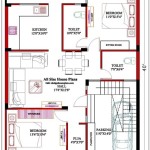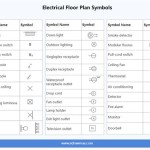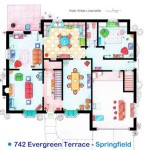Drainage Plans For My House: Ensuring Proper Water Management
A well-conceived drainage plan is essential for maintaining a healthy and safe living environment in your house. Effective drainage systems prevent water from pooling around your property, which can lead to a host of problems, including foundation damage, flooding, and pest infestations. In this comprehensive guide, we will delve into the various aspects of drainage plans for your house, providing you with the knowledge and insights needed to create a drainage system that meets your specific needs and ensures peace of mind. ### 1. Understanding the Importance of Drainage Proper drainage plays a crucial role in maintaining the structural integrity of your house and preserving its value. Here are some key reasons why drainage is important: -Prevents Foundation Damage:
Water accumulation around your house can seep into the soil, causing the foundation to weaken and settle unevenly. This can lead to cracks, leaks, and other structural issues that can compromise the safety and stability of your home. -Controls Flooding:
Heavy rainfall or improper grading can result in water pooling in low-lying areas around your property. A well-designed drainage system ensures that excess water is efficiently channeled away from your house, preventing flooding and minimizing the risk of water damage. -Prevents Erosion:
Poor drainage can lead to soil erosion, which can undermine the stability of your landscape and potentially damage your property. An effective drainage plan helps control erosion by directing water away from vulnerable areas. -Keeps Pests Away:
Standing water attracts pests, such as mosquitoes, rodents, and termites. A proper drainage system eliminates these breeding grounds, reducing the risk of infestation and keeping your home pest-free. ### 2. Types of Drainage Systems There are several types of drainage systems commonly used in residential properties. The choice of drainage system depends on factors such as the size and slope of your property, soil conditions, and local regulations. -Surface Drainage:
Surface drainage systems collect and direct rainwater and runoff from roofs, driveways, and patios. This can be achieved through gutters, downspouts, and trench drains. -Subsurface Drainage:
Subsurface drainage systems are designed to remove water from below the ground's surface. This can be accomplished using perforated pipes, french drains, or sump pumps. -Combination Systems:
In many cases, a combination of surface and subsurface drainage systems is used to achieve optimal water management. ### 3. Creating a Drainage Plan Developing a comprehensive drainage plan involves careful consideration of several factors: -Assess Your Property:
Start by thoroughly evaluating the existing drainage patterns and problem areas on your property. Identify low-lying areas, slopes, and potential sources of water accumulation. -Determine Your Drainage Goals:
Clearly define your drainage objectives, such as preventing foundation damage, controlling flooding, or improving soil conditions. This will help guide your drainage design. -Choose the Right Drainage System:
Select the appropriate drainage system based on your property's needs and the advice of a qualified professional. Consider factors such as the severity of drainage issues, soil type, and budget. -Proper Installation:
Ensure that the drainage system is installed correctly by experienced contractors. Improper installation can lead to drainage problems and compromise the effectiveness of the system. ### 4. Maintaining Your Drainage System Regular maintenance is crucial to keep your drainage system functioning optimally: -Clean Gutters and Downspouts:
Regularly clean gutters and downspouts to remove debris and prevent blockages. -Inspect Drainage Pipes:
Periodically inspect drainage pipes for cracks, leaks, or root intrusion. Repair or replace damaged pipes promptly. -Maintain French Drains:
If you have french drains, ensure they are kept free of sediment and debris. Regular maintenance is essential for their proper functioning. -Check Sump Pumps:
If you have a sump pump, test it regularly to ensure it is operating correctly. Replace the pump if it fails or shows signs of wear. ### Conclusion A well-designed and maintained drainage plan is a cornerstone of a healthy and safe living environment. By understanding the importance of drainage, choosing the right system, and following proper installation and maintenance practices, you can effectively manage water around your house and protect it from potential damage. Remember, a well-functioning drainage system not only enhances the structural integrity of your home but also contributes to its overall value and appeal.
Residential Drainage Life Of An Architect

Where Can I Find Drainage Plans For My House Soho Real Estate

House Drainage Important Components Used In System

Self Build House Extension Drains Planning

Drainage Layout Responsibility Lanes For Drains

Drainage Guide Step 3 Plan Layout The French Drain

House Drainage Layout Explanation

Plan No 1 Outside House Drainage

Where Can I Find Drainage Plans For My House Soho Real Estate

Pin On My Saves








